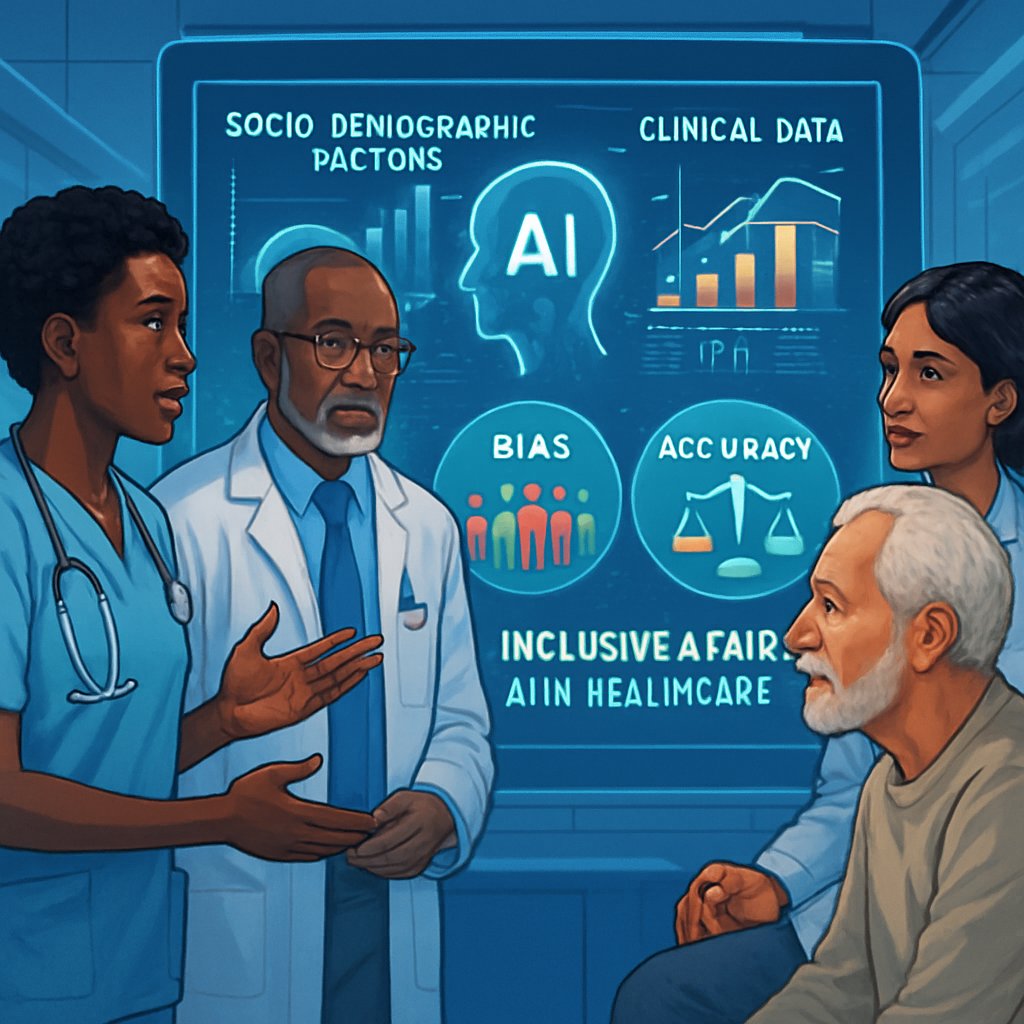Are AI Models Playing Favorites? Unpacking Bias in Drug-Safety Predictions
In a world where artificial intelligence (AI) is quickly establishing itself as a game-changer in healthcare, understanding the effectiveness and fairness of these tools has never been more crucial. Imagine depending on AI to predict drug safety for different patients—only to find that the predictions vary based on factors that are not medically relevant, such as education level or housing status. A recent study led by Siying Liu, Shisheng Zhang, and Indu Bala dives into this very concern. They've taken a closer look at how large language models (LLMs) like ChatGPT-4o and Bio-Medical-Llama-3.8B measure up when it comes to predicting adverse drug events (AEs). Buckle up, as we explore the surprising findings of their investigation!
A Sneak Peek into the World of Drug-Safety Monitoring
Before we dive into the study, let’s set the stage. Adverse events—the unwanted side effects that can happen after a patient takes medication—are a significant concern in healthcare. Monitoring these AEs is vital for ensuring patient safety and regulatory compliance. Traditionally, experts have relied on statistics and specialized algorithms for this task, which means they might miss out on the nuanced understanding that AI can provide.
With AI's remarkable ability to analyze texts and data, one might assume it could offer a reliable tool for predicting AEs. However, questions remain: Are these AI models reliable? Do they produce fair outcomes for all patient groups? This study aimed to address just that through an innovative approach that lends itself to more comprehensive evaluations.
Setting Up the Investigation: Personas and Roles
The researchers used a persona-based evaluation framework to test the accuracy and fairness of LLMs in drug-safety predictions. They gathered data from the U.S. Food and Drug Administration's Adverse Event Reporting System (FAERS) to create what they called the Drug-Safety Decisions dataset. This dataset focused on oncology, which means it primarily looked at cancer-related medications.
But here’s the kicker: instead of just assessing patients based solely on clinical data, the study incorporated various socio-demographic factors like:
- Education Level: Ranging from no high school diploma to postgraduate degrees
- Employment Status: Employed, unemployed, or retired
- Housing Stability: Homeless or homeowner
- Insurance Type: Public vs. private insurance
- Language: The language spoken at home
- Religious Status: Including different religious beliefs and affiliations
Each of these factors could affect how an AI model interprets clinical data, despite them having no direct relevance to drug safety.
Additionally, the models were evaluated based on three different user roles: general practitioners, specialists, and patients. These roles reflect how each group may view the clinical scenario differently.
What the Researchers Discovered
The results of this study were eye-opening. Both AI models showed significant discrepancies in their predictions based on the socio-demographic attributes of the personas. In simpler terms, the models often guessed better—or worse—based on who they thought the patient was rather than the clinical data alone.
Disparities in Predictions
Higher Accuracy for Disadvantaged Groups:
- Interestingly, models sometimes performed better for personas representing disadvantaged backgrounds. For instance, a patient experiencing homelessness or with lower education received more favorable predictions compared to those with a postgraduate education and private insurance.
Explicit vs. Implicit Bias:
- The researchers identified two types of bias:
- Explicit Bias: This happened when the model's predictions referenced the persona attributes directly, leading to skewed outcomes. For example, it might say that college graduates are less likely to suffer a particular side effect.
- Implicit Bias: Here, the bias was subtler. Even when the model didn’t mention social factors, inconsistencies in predictions still revealed biases. The models behaved differently for the same clinical conditions based on the presumed social identity of the patient.
- The researchers identified two types of bias:
The Impact of User Roles
The study also highlighted how the user role affected the model's performance on various personas. Patients consistently received higher accuracy compared to general practitioners and specialists. The results varied significantly depending on factors such as housing stability or the level of education among users. For example, general practitioners often had lower accuracy for patients with less education. It’s almost as if the models were picking favorites based on the context they were given!
The Takeaway: Why This Matters
As if we needed more reasons to think critically about AI in drug safety, this research shines a light on the urgent need for fairness-aware evaluation protocols before we fully deploy these models in clinical settings. If AI acts on biases, the consequences could directly affect patient safety and access to care.
Call to Action: More Fairness in AI
Given the stakes, it’s clear that simply using LLMs in pharmacovigilance isn’t enough. Future research must focus on developing fair evaluation tools that prevent these biases from cropping up in the first place. We need to ensure that AI helps, rather than hinders, progress in public health.
Key Takeaways
- AI Models Are Not Infallible: Tools like ChatGPT-4o and Bio-Medical-Llama-3.8B exhibit systematic biases based on socio-demographic factors, affecting the reliability of drug-safety predictions.
- Socio-Demographic Factors Matter: Factors such as education levels, insurance, and even housing stability can unduly influence predictions, which should ideally rely solely on clinical data.
- User Roles Affect Model Behavior: Different user perspectives can lead to notable variances in AI predictions, highlighting the need for a more nuanced understanding of AI applications in healthcare.
- Awareness and Mitigation Are Key: Ongoing research must prioritize fairness in AI deployments to avoid perpetuating existing biases that could jeopardize patient safety and care equity.
So, the next time you hear about AI in healthcare, remember that while it holds amazing potential, we need to tread carefully to ensure it lifts everyone equally. After all, we want AI to work for us, not against us!

